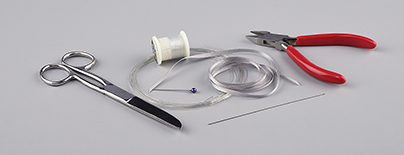Combine bead weaving and wirework with PRECIOSA Pearl Pastel Lining seed beads and Light Ivory Wedding beads to create a buttonhole for the groom. The finished piece can be treasured as a lasting keepsake from the special day.
Kerrie Slade have used Czech PRECIOSA Traditional Czech seed beads in her creation.
Learn MoreBeading thread to match your chosen beads (KO grey); soft silver-plated wire, 0.4 mm, 80 cm; ribbon 30 cm; pin; scissors; wire cutters; size 10 to 15 beading needles

The finished piece measures approximately 10 cm x 4 cm.
Share this project with your friends
This website uses cookies
PRECIOSA ORNELA, a.s. hereby informs you that its website uses cookies You can find more information about our cookies and how your data is processed in the privacy statement. We request your consent to use cookies specified below.